Resources and Tools For Creating A Family Tree: The exploration of lineage and heritage is an intriguing journey that can evoke a profound sense of connection and self-understanding.
Our individual stories are built on the foundation of countless previous generations, each with its own unique narratives, challenges, and triumphs
This journey into one’s past, better known as genealogy, allows us to retrospectively map out our histories and gain a deeper grasp of who we are.
It’s a pursuit that is both exciting and rewarding, and often cathartic. As we embark on the challenge of unearthing our family history, we introduce various resources and tools.
These tools simplify the process, turning an intricate task into an engaging family project. Whether you’re diving into,
- Public archives.
- Deciphering DNA reports.
This comprehensive guide will equip you with the knowledge necessary for building your very own family tree.
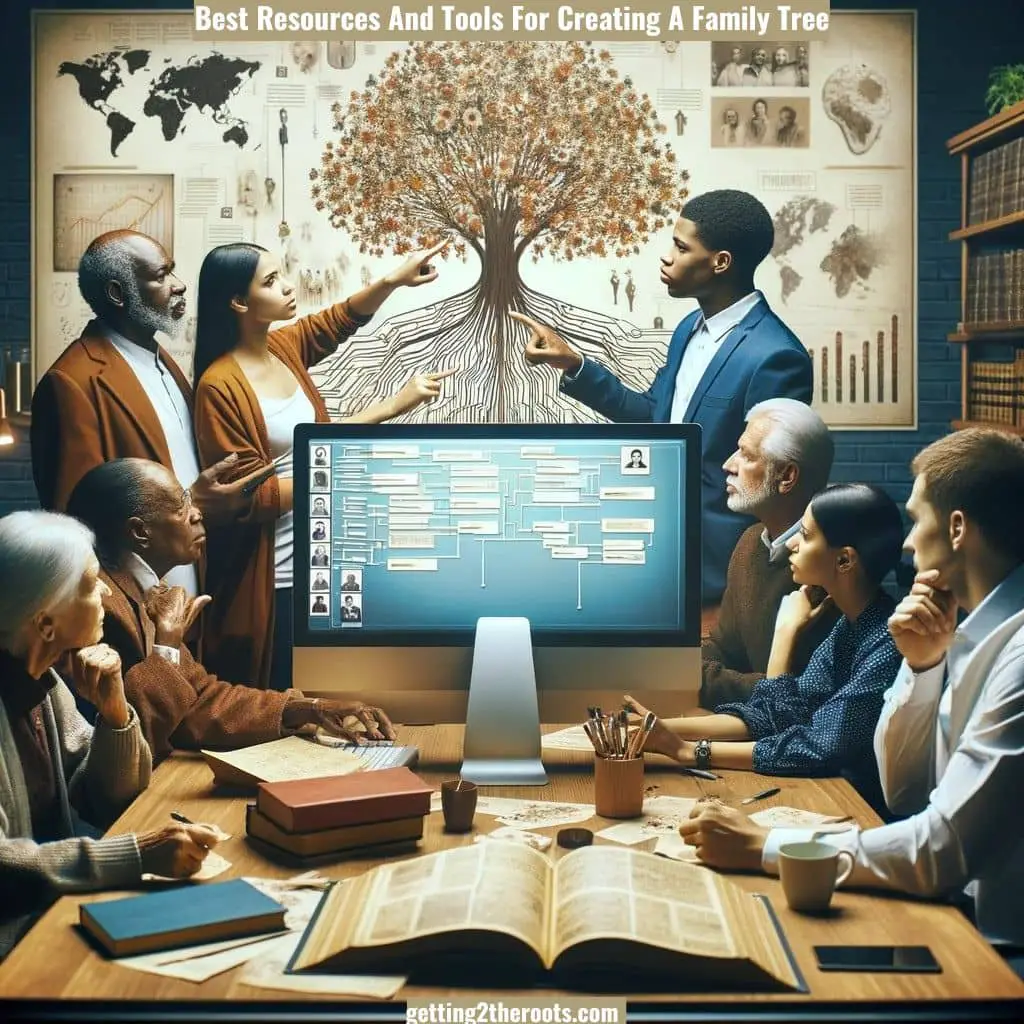
Understanding the basics of genealogy
Unraveling Time: Back To Basics With Genealogy
Hello, beautiful people! Welcome back to another resourceful post. Today’s talk is all about genealogy.
What is it exactly? In the simplest terms, genealogy is the study of families, family history, and the tracing of their lineages.
It involves an extensive examination of records, performing historical research, and even genetic analysis at times.
As we embrace the journey of discovering our family’s past, let’s delve into the basics of genealogy together.
The Significance of Genealogy
First, let’s discuss why genealogy matters. Understanding our ancestry can be satisfying on many levels.
It’s a powerful way to connect with our roots and appreciate our ancestors’ triumphs and struggles. Plus, it’s undeniably fascinating to uncover stories that should never be forgotten.
Besides its sentimental value, genealogy also plays a critical role in medical history, inheritance rights, and even in settling legal disputes.
For those new to tracing their ancestry, I recommend exploring “Ancestors’ Research | Free Beginner’s Guide” for a comprehensive introduction.
Embarking on the Journey: Gathering Information
Now, where to start with genealogy? Don’t fret; a journey of a thousand miles starts with a single step.
Begin with conversations with senior members of your family. They are treasure troves of information waiting to be discovered!
Listen to their narratives and remember the names, dates, places, and significant events. Jot everything down; you’ll need this for more formal records later.
Creating a Family Tree: Organizing the Narrative
Once you’ve gathered this preliminary information, the next step is to put it all into a family tree. Start with yourself and work backward, adding information for each preceding generation.
Remember, the basics include full names, birth dates and locations, marriage dates and locations, death dates and locations, and the names of their children.
For an in-depth exploration of constructing your family tree, consider reading my article, “How to Build Your Family Tree | For Beginners”.
Tools for Efficient Family Tree Management
Organizing the information is crucial in genealogy research. Luckily, numerous websites and software these days can effortlessly create virtual family trees.
These online platforms also offer tools for managing photographs, stories, audio files, and other historical records.
If you’re interested in creating your family tree online, take a look at the article “Creating a Stunning Family Tree Online: Tips and Tricks”.
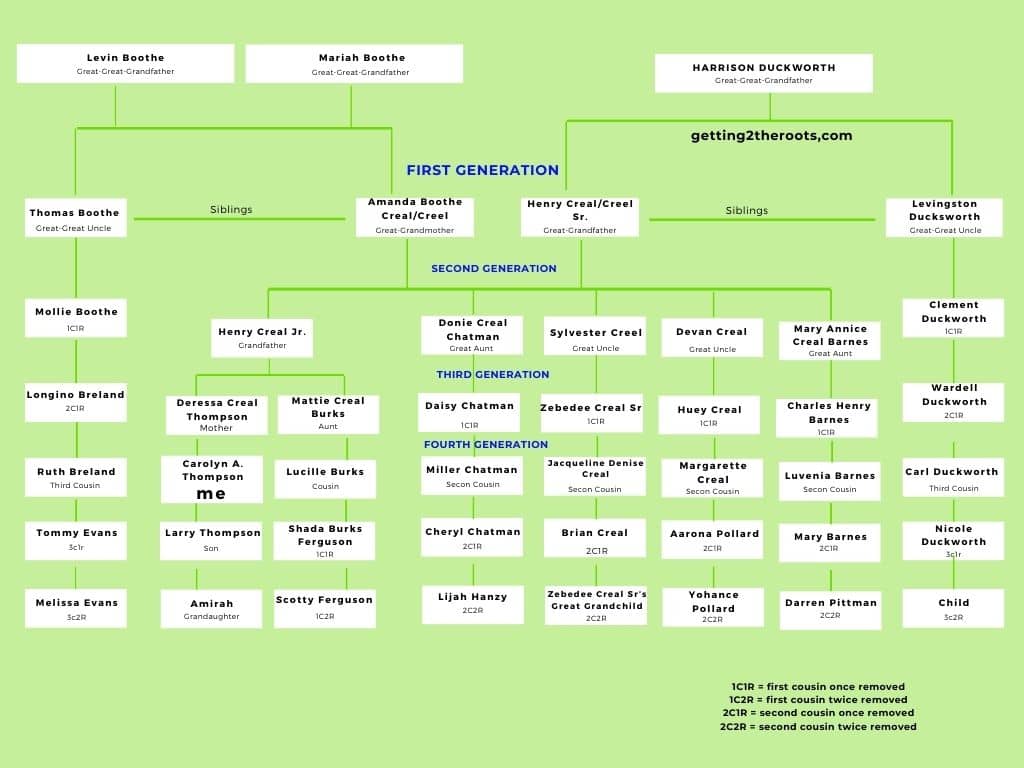
Uncovering Ancestral Truths: The Role of Formal Records
Formal records are vital sources of information in genealogy research. We’re talking about birth certificates, marriage licenses, and death records.
Additional records, such as census records, immigration records, military records, and church records, can also provide much-needed information.
Digging through these records can be time-consuming but remember that perseverance is the key to unraveling your family’s story.
As you accumulate more records, maintaining organization becomes crucial. For helpful tips, read “The Ultimate Guide to Organizing Genealogy Records”.
Exploring Alternative Resources: Libraries, Societies, and DNA Testing
While the internet has drastically simplified the process of genealogy, other resources are equally valuable.
Local libraries, historical societies, and genealogical societies carry a load of informative data waiting to be unearthed. Don’t underestimate the power of these piles of papers!
Embarking on the Genealogical Journey: A Final Note
Finally, if the paper trail draws a blank, DNA testing comes to the rescue. Tremendously popular these days, DNA testing kits can uncover genetic links and enrich your family history.
So there it is, folks, the exciting world of genealogy laid bare before you. Remember to begin with what you know.
Then, expand with consistent research, be organized, and never shy away from seeking help from available resources. Patience is indeed the best companion as you dig through the layers of your ancestral stories.
Here’s wishing you all a delightful journey in discovering what’s woven into the fabric of your family’s past! Until next time, take care and have fun time-traveling!

Choosing the Right Tools for Building a Family Tree
As you embark on the journey of building your family tree and delving into your family’s history, there are some indispensable tools that you’d do well to have close to hand.
These tools can simplify the genealogy process, making it more manageable and maybe even more fun. Here goes:
Simplifying Family Tree Creation with Genealogy Software
Genealogy Software: Having a good genealogy software tool can make all the difference in how easy it is to build, manage, and share your family tree.
Some robust programs to consider include Legacy Family Tree, Family Tree Heritage, and RootsMagic.
These come armed with features like color coding, indexing, and multimedia capabilities, and can often even be synchronized with genealogy websites for easy data imports and exports.
Unveiling Family Connections through Ancestry Websites
Ancestry Websites: Starting with a blank slate may be daunting. But fear not – there are ample websites out there designed especially for you.
Ancestry, MyHeritage, and FamilySearch are just a few, and they provide access to billions of genealogical records that can help you fill the gaps in your family tree.
For a more comprehensive understanding of what you can expect to invest in this pursuit, I invite you to read the “Best Guide to the Full Cost of Genealogy Research.”
This guide will provide you with detailed information about the potential expenses associated with various genealogy tools and resources, helping you make informed decisions about your family history journey.

Tracking Multiple Bloodlines with Genealogy Notebooks
Genealogy Notebooks: Sounds old-school, right? But trust me, the joy (and usefulness) of making notes the traditional way cannot be replaced.
Genealogy notebooks can be wildly helpful when tracking multiple bloodlines, particularly when starting out.
They provide a physical place to jot down notes, fill in charts, and sketch out tree branches as you go along.
Preserving Family Memories with Digital Scanners
Digital Scanners: Preserving family memories, photos, and documents is a big part of any family tree project.
So, you’re going to need a solid scanner. Look for scanners that are high-resolution and can handle photographs, slides, and negatives.
Some will even scan directly to cloud storage sites, which can be particularly handy.
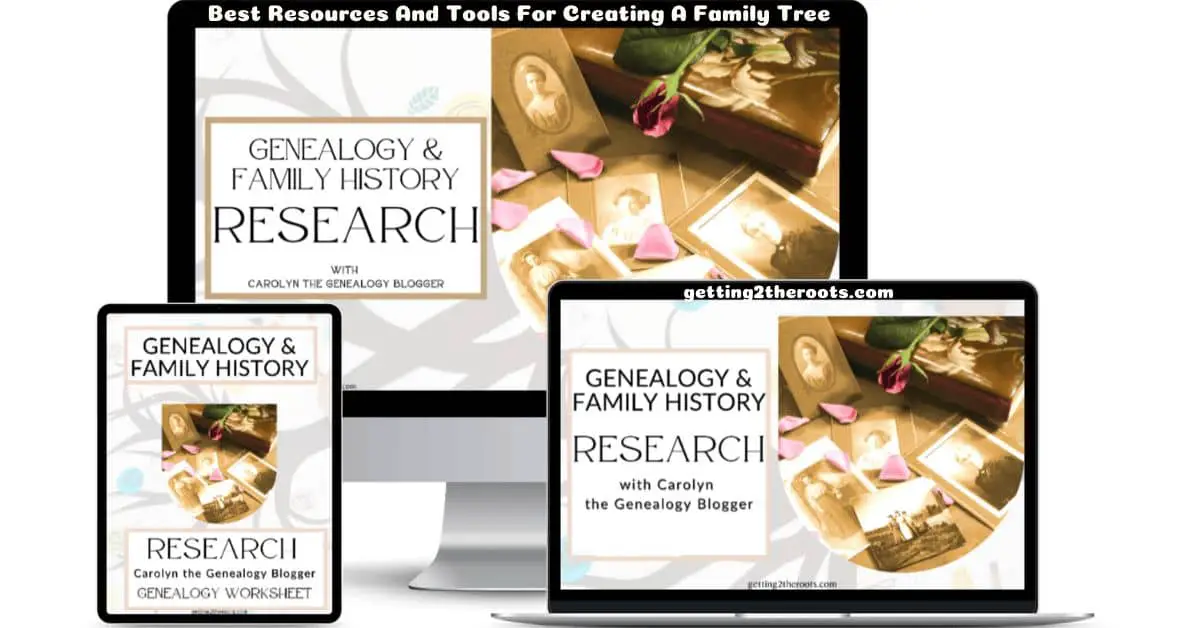
Learning from Experienced Genealogists with Online Tutorials and Guides
Online Tutorials and Guides: Trust us when we say—you are not alone in this journey. Countless passionate genealogists have trod the path before you, and many have been generous enough to share their knowledge.
Websites like MyHeritage, Ancestry.com’s Learning Center, and Progress Genealogy offer valuable tutorials, guides, and cheat sheets that can help guide your research.
To discover the best websites for tracing your ancestors, please visit, “Top Websites for Professional Genealogists”.
Gaining Insights from Family History Books
Family History Books: There’s no shortage of informative books on the market that can guide you along your genealogy journey.
A comprehensive book such as “The Family Tree Toolkit” by Kenyatta D. Berry or the “Unofficial Guide to Ancestry.com” by Nancy Hendrickson can offer you guidance and maybe even inspire you with their passion and expertise.
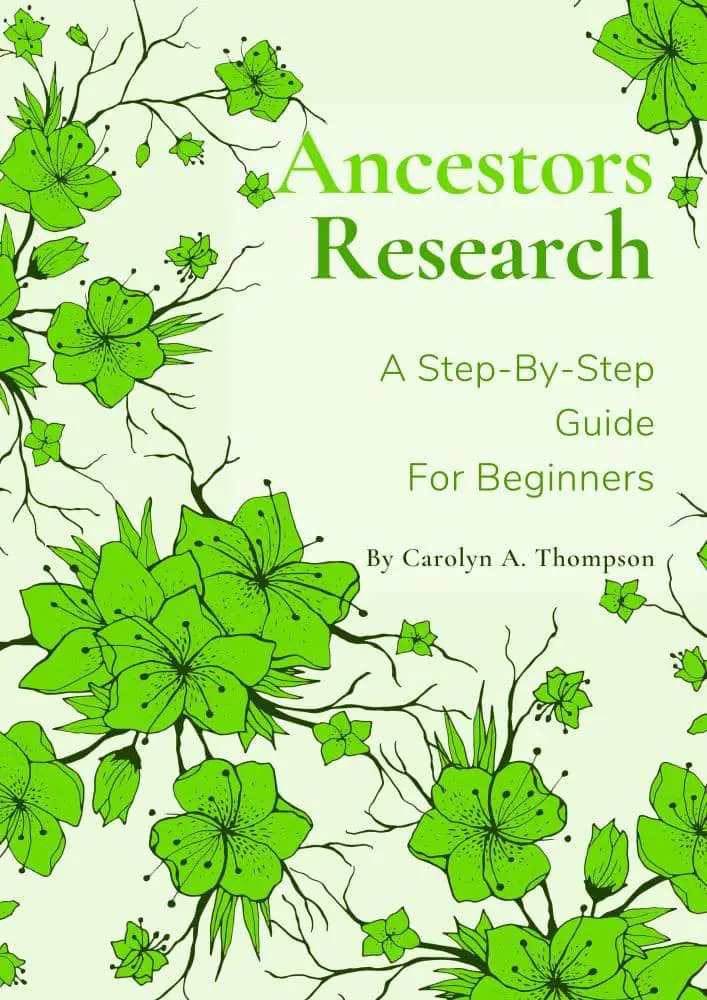
Conclusion: Embarking on the Genealogy Journey
Using these six tools to complement your dedication and curiosity will pave a smoother way forward in the journey of genealogy.
Remember, the past has a lot to say, and unlocking your family history is a rewarding way to hear its message. Embrace the twists and turns, enjoy the journey, and happy hunting!

Collecting and verifying family history
The genealogical journey is complex, thrilling, and sometimes even emotionally rewarding. Without a doubt, gathering accurate data is a critical component of this pursuit.
Although we’ve covered fundamental aspects like using formal records, consulting family members, and employing DNA testing, there are even more tools and resources at your disposal for collecting and verifying your family history data.
Organizing and Storing Data: Genealogy Software
Let’s start with genealogy software. These programs are designed to help you organize, store, and search data efficiently.
They often provide features such as creating family trees, printing charts, noting source citations, and even looking for data discrepancies.
Some popular choices include Gramps, Family Tree Heritage, and RootsMagic. Do some research, test out a few options, and pick what suits your needs best.
One thing’s for sure, genealogy software will save you countless hours and mistakes!
Uncovering Ancestral Traces: Ancestry Websites
Next up, we have ancestry websites. Websites like Ancestry.com, Findmypast, and MyHeritage offer a treasure trove of valuable documents like birth and death records, census data, and even military records.
Not only can you find documents, but these websites also offer the opportunity to connect with relatives or others who are researching the same family line.
Remember, while these websites have vast databases, the data they hold is dependent on what their subscribers have uploaded, so cross-verifying information becomes essential.
Keeping Track of Details: Genealogy Notebooks
- Genealogy notebooks are another essential tool, but they often get overlooked.
- Notebooks act as an on-the-go tool to note down information from family conversations or rummage through old, loose papers.
- You never know where you might find a piece of your genealogical puzzle!

Preserving the Past: Digital Scanning Tools
Technological advancements have eased the process of digitizing and preserving old photos and documents.
Digital scanners are an incredible tool to have in your genealogical arsenal. They help you digitize paperwork and provide a backup for your research.
Some mobile scanner apps even allow you to upload directly to cloud storage, ensuring your data remains safe and accessible.
Discover the best tools for your research by checking out the articles “Uncovering Your Roots: Best Devices for Genealogy Research” and “New Era: AI Chatbots For Genealogy Research”.
Learning from Experienced Genealogists: Online Tutorials and Guides
Embracing the digital age doesn’t mean disregarding traditional sources of learning. Online tutorials and guides offer extensive knowledge and advice that can aid beginners and experienced genealogists.
There are countless YouTube channels, blogs, and courses dedicated to genealogical education. Websites like FamilySearch’s Learning Center offer free guides on various genealogy-related topics.
Exploring Cultural Contexts: Family History Books
Last but certainly not least, never underestimate the power of family history books. These are available across different themes and areas of interest.
Some focus on how to trace family lineages, while others delve into the cultural aspects that shaped our ancestors’ lives. A carefully curated collection of these books can offer insightful perspectives.
Conclusion: Unraveling the Family History Tapestry
In conclusion, robust family history research doesn’t have to be an insurmountable task. With the correct resources, patience, and a knack for detective work, you’ll piece together your family history in no time!
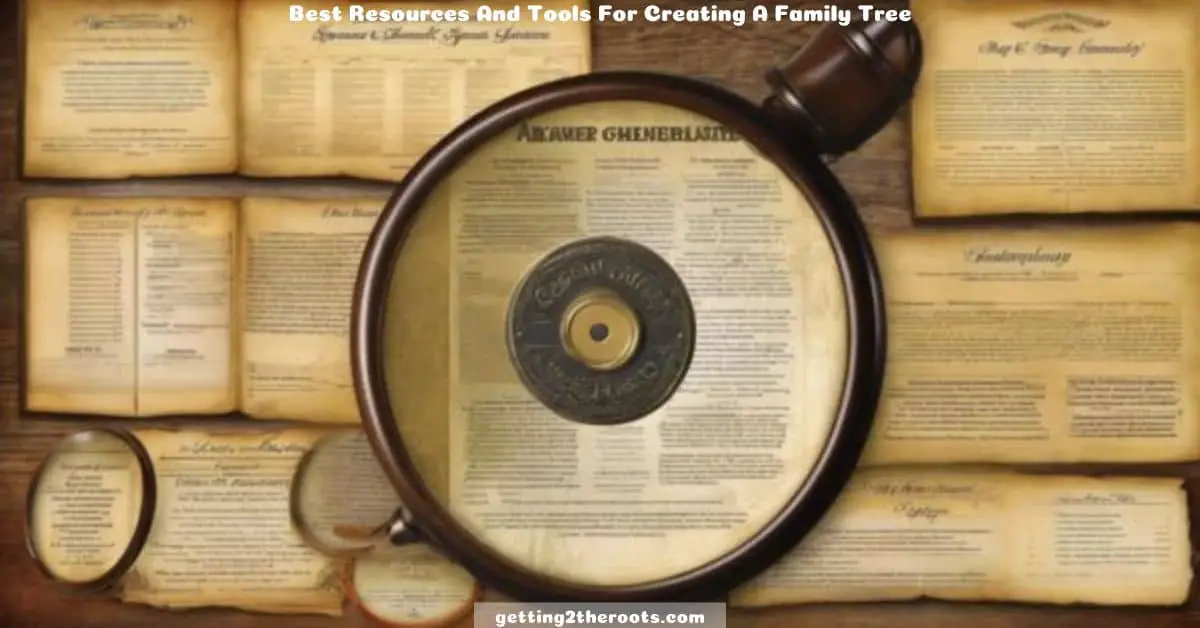
Reading and interpreting genetic reports
Unraveling the Threads: Your Guide to Understanding Genetic Reports
After collecting data and delving into DNA testing, you are now at the exciting stage of deciphering the secrets in your genetic reports. It’s an intriguing process, akin to piecing together a complex puzzle.
Understanding the Structure of Genetic Reports
As fascinating as it seems, understanding genetic information can be a bit complex, but here’s a broad brushstroke on how you can start making sense of your family’s genetic reports.
The first thing to comprehend is the layout of your genetic report. These reports are often neatly categorized into sections such as ancestry, traits, and health.
Each has its own specific elements to explore. The ‘traits’ section, for instance, can enlighten you about how your genes influence certain characteristics, from hair color to taste preferences!
It’s amazing how genetics is more than our history, it even explains why your second cousin on your mother’s side curls their nose while eating cilantro.
Familiarizing Yourself with Key Terms
Remember, these genetic reports are filled with scientific names and terms that might seem gibberish at first!
So, as you read, spend some time understanding several key terms, and don’t shy away from seeking help.
Perhaps appoint a family ‘genealogy detective,’ who’ll be in charge of research and comprehension.

Consulting Healthcare Professionals for the ‘Health’ Section
Speaking of comprehension, the ‘health’ section of your report requires special attention. This part can indicate any potential health risks related to gene variants.
But here’s the important thing – these findings don’t seal your fate in terms of health, they simply suggest possibilities.
SelfDecode focuses on genealogy through health testing. For an insightful perspective, consider this independent review: “Decoding Your Health: A Look At SelfDecode DNA Testing”.
For serious implications, definitely consult a genetic counselor or healthcare professional, as they can provide the right guidance.
Utilizing Note-Taking and Diagraming Strategies for Better Understanding
Patience is an ally as you familiarize yourself with these reports – there’s no rush! You might find it helpful to jot down notes, draw diagrams, and use color-coded sticky notes.
The process might be overwhelming at times, but remember, it’s all part of piecing together the grand jigsaw of ancestry.
Leveraging Online Tools for Genetic Data Analysis
- As a shortcut, there are online tools that can help you analyze your genetic data.
- Services such as Promethease and Genetic Lifehacks specialize in simplifying complex genetic data.
- They compile a more digestible summary from the raw data, focusing on identifying genetic variants or mutations.
- These variants are then cross-referenced with research that associates them with specific traits or health conditions.
- It’s like having your personal guide through the labyrinth of genetic reports.
Embracing the Continuous Learning Journey
Last but not least, learning about your ancestors through genetic reports is a journey that doesn’t end.
Embrace the process, stay open to learning, and enjoy unearthing your roots. And as you go along, share your discoveries with your family, discovering the makings of your bloodline together.
Your family’s genealogy isn’t an old, dusty book; it’s a living history, one where all things past meet the present!

Sharing and preserving your family tree
Passing on and Preserving the Family Tree for Future Generations: A Continuation
One of the most wonderful pieces of a family’s legacy lies tucked within the intricate branches of its family tree.
Yes, we’ve delved into how to begin your research, organize it, present it, and even how to understand it.
We’ve indulged in learning about genealogy software, ancestry websites, and DNA tests. Now the focus shifts: how can we share and preserve this living legacy for our future generations?
Sharing Your Family’s Story Through Self-Publishing
- Modern technology has made it simpler than ever to leave an impressive legacy.
- Services such as Promethease and Genetic Lifehacks are designed to simplify complex genetic data.
- They transform raw data into a more digestible summary.
- This includes flagging genetic variants or mutations that have been linked in research to specific traits or health conditions.
- These modern methods are essential for safeguarding our history more effectively.
Inviting Society into Your Family’s Story
A dynamic way to conserve family history is by transforming it into an engaging narrative. Self-publishing platforms like Blurb or Lulu allow you to craft beautifully bound memoirs, family cookbooks, and photo books.
Not skilled in writing? No worries! Companies such as StoryWorth can guide you through producing a year’s worth of personalized short stories based on provided prompts, which they then compile into a stunning hardcover book.
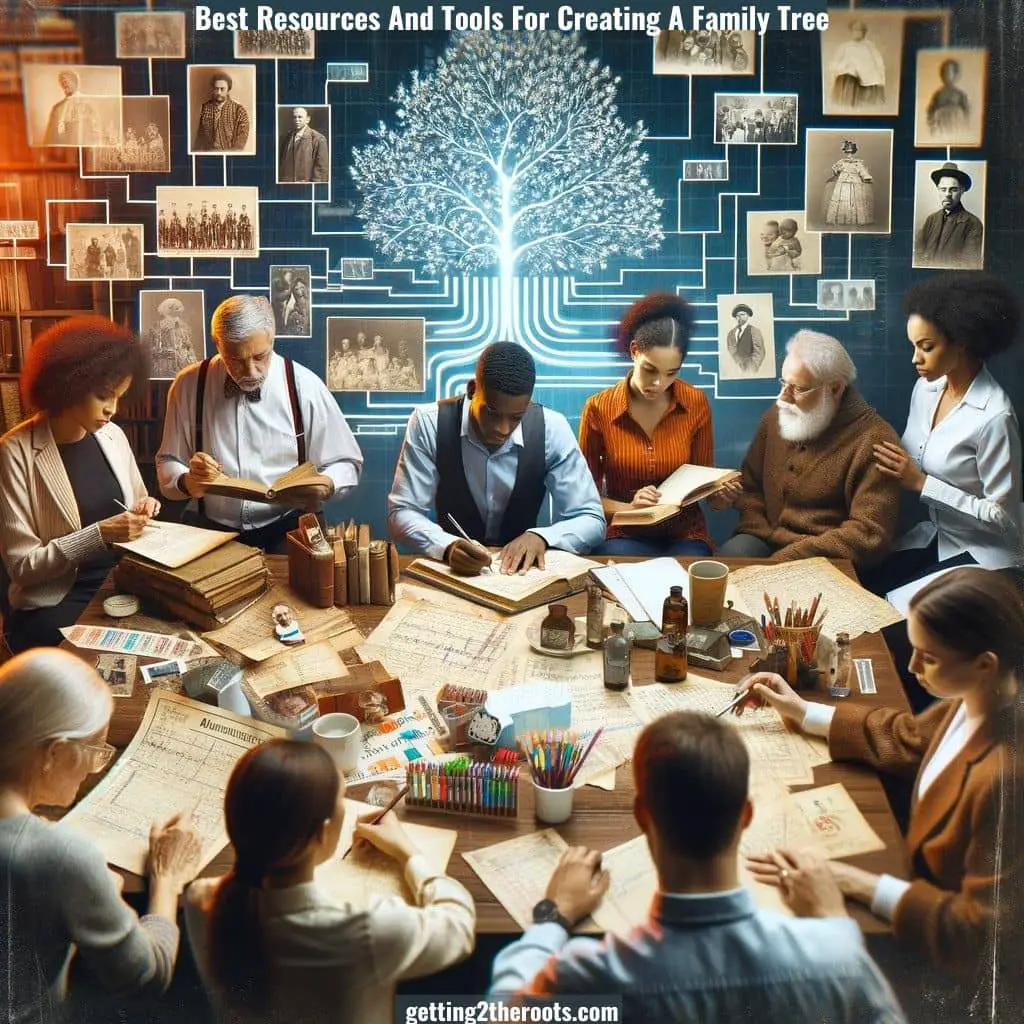
Preserving Family Roots Digitally
Digitally preserving your family’s history is a valuable endeavor, and creating a family website is a fantastic way to consolidate stories, photos, genealogy, and recipes.
This creates a centralized hub for your family’s legacy, accessible to future generations. If you’re not tech-savvy, there are several user-friendly website builders:
- HostGator: Known for its cost-effective and reliable web hosting services, offering various hosting plans with strong customer support.
- Weebly: Known for its ease of use, it provides an intuitive website builder and hosting services.
- GoDaddy: A well-known provider that offers a range of services, from domain registration to hosting solutions.
- Web.Com: This is ideal for beginners due to its balance of user-friendly features and affordability.
- Webhostingpad: A budget-friendly option, offering basic hosting capabilities with decent performance.
For an in-depth guide on starting your own blog, including tips for preserving your family’s digital history, check out the article “How to Create Your Own Blog: 15 Best Tips”.
Additionally, for inspiration and ideas on creating your own family history site, I invite you to visit my family history websites at https://crealfamily.com/ and https://crealfamily.wixsite.com/creal.
These websites showcase different ways of presenting family history, integrating various elements such as stories, photos, genealogical research, and more.
Exploring these sites can provide you with creative ideas and help you envision how you might design and populate your own family history blog or website.
Keeping Family Memories Alive with Blogs and Social Media
If a full-blown website feels like an overwhelming project, consider starting a family blog. Here, stories and pictures can be added as frequently as you wish to keep relatives near and far updated on family happenings.
For those who find the idea of creating a full website daunting, starting a family history blog might be the perfect alternative.
Another option is to use social media platforms to preserve your family history. By regularly posting and adjusting privacy settings, you can create an interactive and exclusive space for family members.
For more insights and strategies on this topic, I encourage you to read the articles.
- “Techniques For A Successful Family History Blog”
- “How To Turn Your Hobby into a Business | Best Tips.”
- These resources offer valuable tips for effectively sharing your family’s legacy.
Encapsulating Your Family’s Stories through Videos and Podcasts
Capturing your family’s history through video and audio recordings adds a uniquely intimate dimension to preserving memories. Why not consider starting a YouTube channel for this purpose?
You could interview older family members, record family gatherings, or even create how-to videos for your family’s favorite recipes. This approach brings your lineage to life in a dynamic and engaging way.
For private family video storage, platforms like Vimeo are excellent. And if you’re interested in sharing your family’s stories in an oral format, consider podcast hosting platforms like Podbean and Anchor, which are very user-friendly.
I invite you to visit and explore my YouTube channel at [Click Here] for more ideas and inspiration on how to creatively capture and share your family history.
Preserving Your Family Tree: A Journey of Discovery and Legacy
The road to preserving and sharing your family tree is indeed a journey and cultivating that understanding takes patience and effort. However, the outcome is worth every moment.
From bound books of stories and customized websites to audio recordings, there is a medium to suit every family.
As we gather, arrange, and share these treasures, there is no denying the excitement, curiosity, or pride that our children, grandchildren, and future generations will experience as they, too, explore their roots.
This family history doesn’t merely belong to us; it is a legacy, a collection of stories waiting to be discovered by future generations.
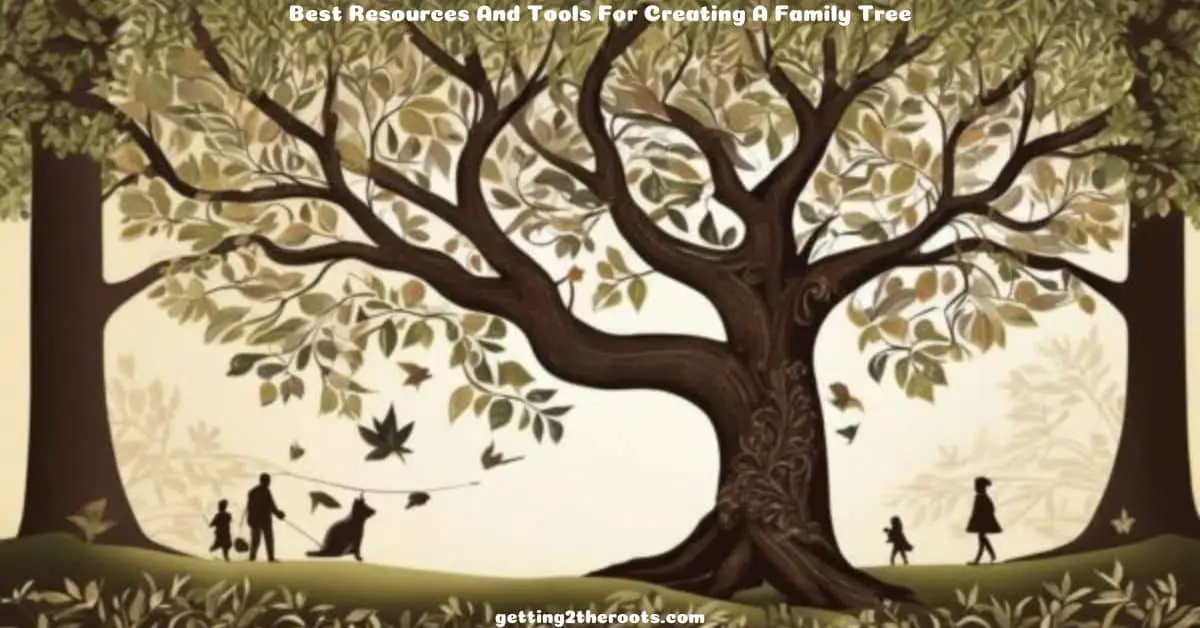
The Significance of Preserving Family History: A Bridge to the Past
The act of tracing and documenting one’s ancestry is more than a mere pastime. It’s a tangible bridge to history.
It allows you to intimately connect with the past, appreciate its implications for the present, and perceive how it potentially shapes the future.
It facilitates a unique narrative that instills a rich sense of cultural appreciation and perpetuates a legacy for succeeding generations.
Building Family Cohesion and Preserving Identity through Family Trees
More than the thrill of discovery, building a family tree cultivates family cohesion and provides a sense of belonging.
As you pursue this journey, be reminded that your family history is a tapestry of stories patiently waiting to be told—an array of resilient threads combining to form the detailed pattern of your individual identity.
Through your research, may you have a better understanding of the roots from which you’ve grown and a renewed appreciation for the branches yet to flourish on your family tree.
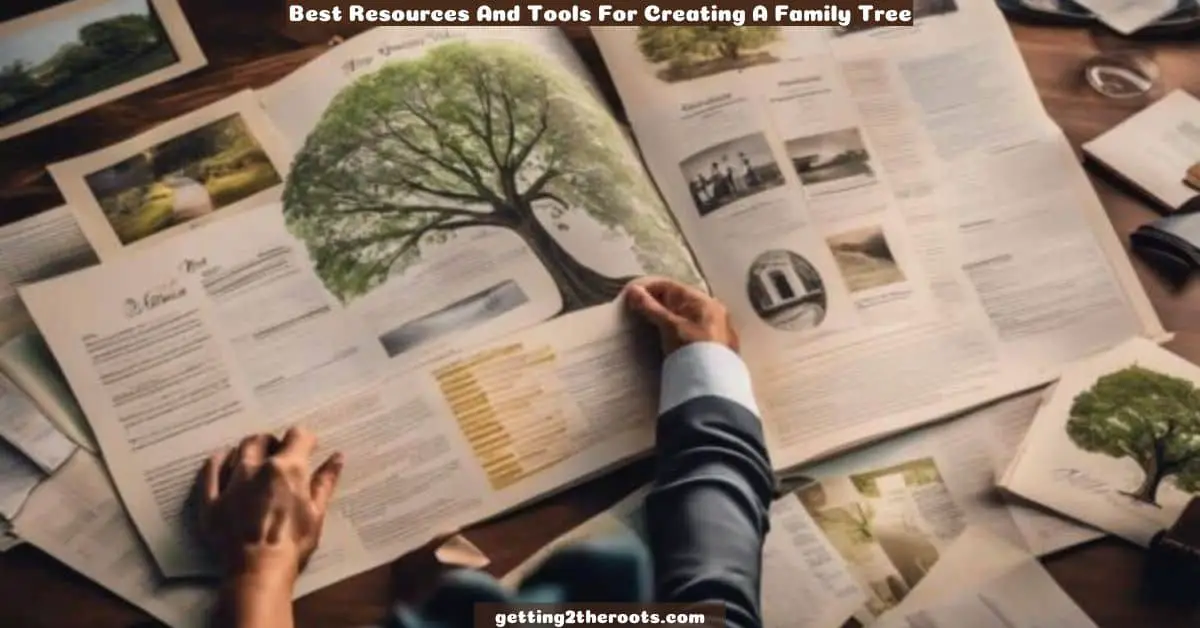
Conclusion
Genealogy, the captivating journey of tracing your family’s roots, is a voyage of self-discovery, unearthing the stories that weave the tapestry of your identity.
It’s a pursuit that unveils the resilience and triumphs of generations past, providing a profound appreciation for the legacy that shapes your present.
Embark on this adventure with a blend of patience, perseverance, and a touch of detective work, and you’ll uncover a trove of ancestral treasures that will illuminate your understanding of yourself and your place in the world.
Frequently Asked Questions (FAQ): Tools For Creating A Family Tree
Q: What is the significance of preserving family history?
A: Preserving family history is akin to safeguarding a priceless heirloom. It’s a tangible link to the past, providing a deeper understanding of our roots and the forces that have shaped our present. It instills a sense of belonging, connecting us to the legacy of those who came before and those who will follow. By preserving family history, we honor our ancestors, enrich our understanding of ourselves, and create a lasting legacy for future generations.
Q: How can I overcome challenges in genealogy research?
A: Genealogy research can be challenging, but with persistence and a willingness to explore diverse avenues, you can overcome obstacles and make significant progress. Embrace the puzzle-solving aspect of genealogy, viewing challenges as opportunities to uncover hidden truths. Consult experienced genealogists, explore online resources, and utilize technology to streamline your search. Remember, every piece of information, no matter how insignificant it may seem, could hold the key to unlocking your family’s history.
Q: How can I keep my family tree organized and up-to-date?
A: Maintaining an organized and up-to-date family tree is crucial for preserving the accuracy and accessibility of your ancestral records. Utilize genealogy software or online family tree platforms to create a digital representation of your family tree. These tools offer features like color-coding, indexing, and multimedia capabilities, making it easier to visualize and manage your family history. Regularly update your family tree with new information and discoveries to ensure its relevance and accuracy.
Q: How can I involve younger generations in genealogy research?
A: Engaging younger generations in genealogy research fosters a sense of connection to the family’s past and cultivates an appreciation for their heritage. Transform genealogy into an interactive experience by sharing stories, photographs, and artifacts related to family history. Engage them in age-appropriate research tasks, such as interviewing older family members or conducting online searches. By involving younger generations in genealogy, you not only enrich their understanding of their roots but also ensure the preservation of family history for future generations.
Q: How can I utilize technology to enhance my genealogy research?
A: Technology has revolutionized genealogy research, providing a vast array of tools to enhance your exploration of family history. Online genealogy databases offer access to billions of records, including birth certificates, census data, and military records. Specialized software helps organize and analyze your family tree data, while DNA testing can reveal genetic connections to distant relatives. Embrace technology to expand your research horizons and uncover hidden threads in your family’s tapestry.

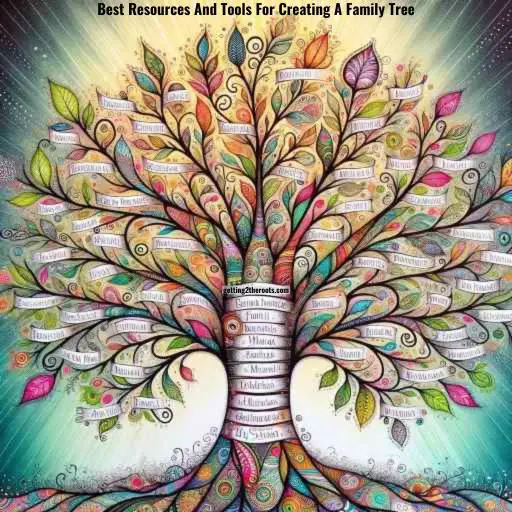







1 thought on “Best Resources And Tools For Creating A Family Tree”
Dear Carolyn,
Would you like to review our new book, GENERATION BY GENERATION: A MODERN APPROACH TO THE BASICS OF GENEALOGY, by Drew Smith?
Thanks,
Joe Garonzik
Marketing Director
Genealogical.com
jgaronzi@genealogical.com